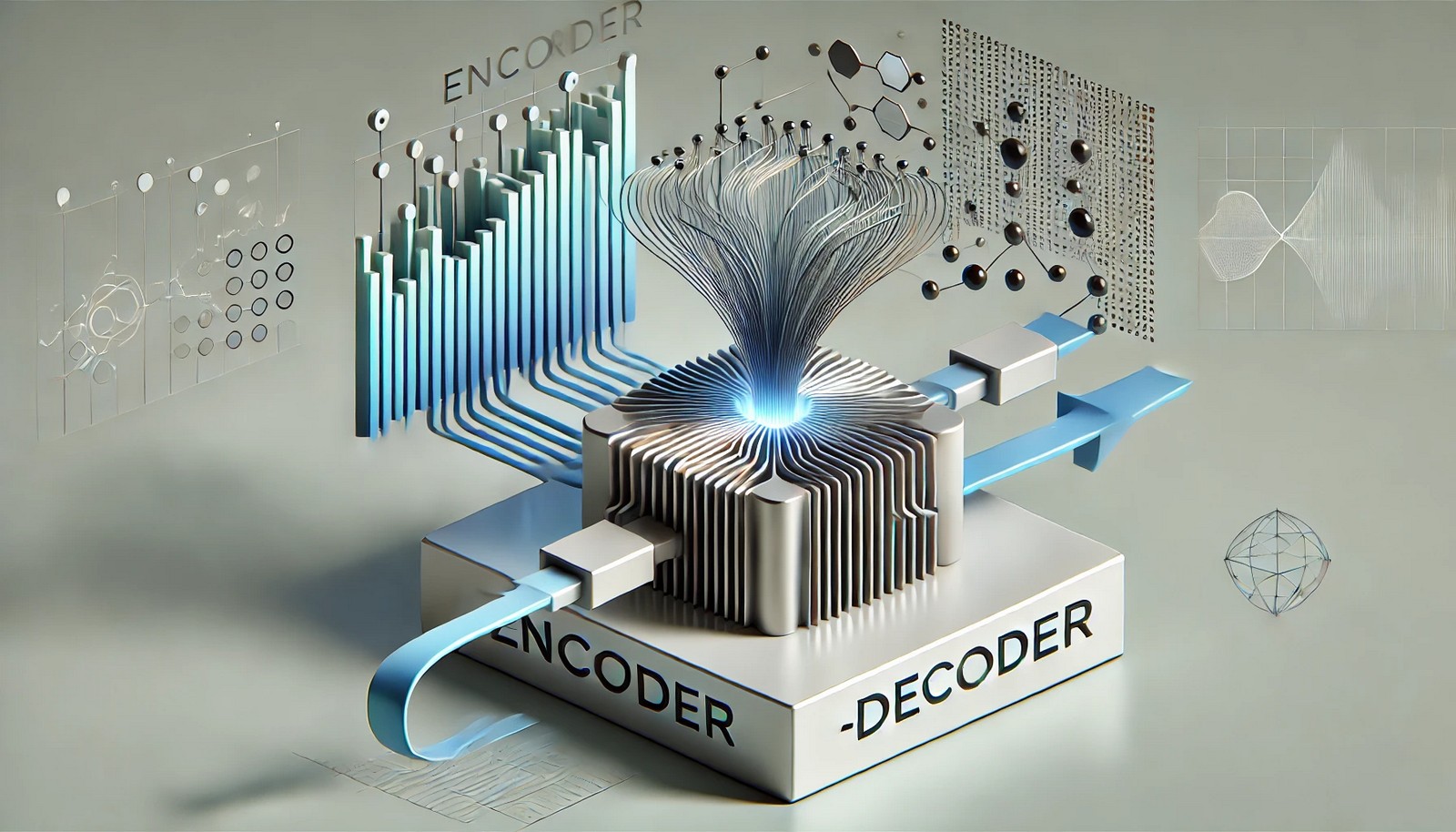Encoder-Decoder Networks

Quick Navigation:
- Encoder-Decoder Networks Definition
- Encoder-Decoder Networks Explained Easy
- Encoder-Decoder Networks Origin
- Encoder-Decoder Networks Etymology
- Encoder-Decoder Networks Usage Trends
- Encoder-Decoder Networks Usage
- Encoder-Decoder Networks Examples in Context
- Encoder-Decoder Networks FAQ
- Encoder-Decoder Networks Related Words
Encoder-Decoder Networks Definition
Encoder-Decoder Networks are neural network architectures designed for tasks requiring sequence transformation, such as translating a sentence from one language to another or generating descriptions for images. The encoder processes the input data into a compressed form, capturing essential features, and the decoder transforms this representation back into a meaningful output, often in a different format or sequence length. This architecture underlies applications in natural language processing (NLP) and computer vision, leveraging various deep learning techniques like recurrent neural networks (RNNs) and transformers.
Encoder-Decoder Networks Explained Easy
Imagine you have a friend who translates books from English to Spanish. They read the English text, think about it, and then rewrite it in Spanish. Encoder-Decoder Networks work similarly in AI. The “encoder” reads and understands one language, while the “decoder” translates it into another language.
Encoder-Decoder Networks Origin
Encoder-Decoder Networks originated in the field of neural machine translation. Initially developed for tasks like text translation in NLP, this model has since expanded to other applications, including image captioning and summarization, powered by advances in RNNs, LSTMs, and more recently, transformers.
Encoder-Decoder Networks Etymology
The term "encoder-decoder" comes from communication theory, where encoding and decoding refer to the processes of transforming data into a transmittable format and back.
Encoder-Decoder Networks Usage Trends
In recent years, Encoder-Decoder Networks have become a mainstay in NLP and vision-based applications. Their capacity to capture sequence-to-sequence relationships makes them valuable in automated translation, question answering, and image-to-text models. Popularity has surged with the development of transformers, which enhanced processing power and accuracy.
Encoder-Decoder Networks Usage
- Formal/Technical Tagging:
- Neural Networks
- Machine Translation
- Sequence-to-Sequence Learning - Typical Collocations:
- "encoder-decoder model"
- "sequence-to-sequence tasks"
- "neural translation with encoder-decoder"
- "transformer encoder-decoder networks"
Encoder-Decoder Networks Examples in Context
- Machine translation systems rely on encoder-decoder networks to convert text from one language to another.
- In summarization tools, encoder-decoder networks condense long articles into concise summaries.
- AI applications for image captioning use encoder-decoder networks to describe visual content.
Encoder-Decoder Networks FAQ
- What are Encoder-Decoder Networks?
Encoder-Decoder Networks are architectures in AI that process and transform data sequences from one form to another. - How do Encoder-Decoder Networks work?
The encoder compresses input data, and the decoder reconstructs it in the desired output format. - Why are Encoder-Decoder Networks popular in NLP?
They excel in tasks requiring sequence transformation, like translation, summarization, and question answering. - What are the main components of an Encoder-Decoder Network?
The primary components are the encoder (input processor) and the decoder (output generator). - Where are Encoder-Decoder Networks applied?
Applications include machine translation, image captioning, speech recognition, and summarization. - What is the role of transformers in Encoder-Decoder Networks?
Transformers improved Encoder-Decoder Networks by enabling faster training and better handling of long dependencies. - Can Encoder-Decoder Networks be used in real-time translation?
Yes, with sufficient processing power, they can support near real-time applications. - What makes Encoder-Decoder Networks effective?
Their ability to capture sequential dependencies and produce coherent outputs is key. - How do Encoder-Decoder Networks differ from other neural networks?
They specifically focus on transforming sequences, unlike traditional networks focused on classification. - Are Encoder-Decoder Networks useful in image processing?
Yes, they are used in image captioning and some types of video analysis.
Encoder-Decoder Networks Related Words
- Categories/Topics:
- Neural Networks
- Deep Learning
- Natural Language Processing
- Machine Translation
Did you know?
Encoder-Decoder Networks revolutionized AI by enabling machines to handle complex sequence transformations. Their breakthrough application in Google Translate allowed the translation of sentences in real time, changing the landscape of machine translation globally.
PicDictionary.com is an online dictionary in pictures. If you have questions or suggestions, please reach out to us on WhatsApp or Twitter.Authors | Arjun Vishnu | @ArjunAndVishnu

I am Vishnu. I like AI, Linux, Single Board Computers, and Cloud Computing. I create the web & video content, and I also write for popular websites.
My younger brother, Arjun handles image & video editing. Together, we run a YouTube Channel that's focused on reviewing gadgets and explaining technology.



Comments powered by CComment